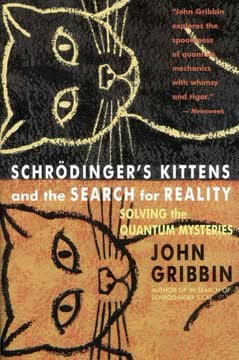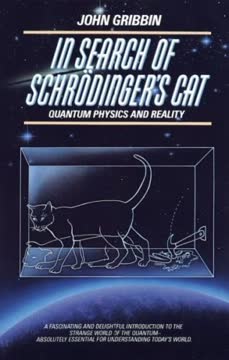Key Takeaways
1. The Quantum World's Core Mystery: Particles Behave as Waves.
This phenomenon ‘is impossible, absolutely impossible to explain in any classical way’.
The two-hole enigma. The central mystery of quantum mechanics is revealed by the two-hole experiment: individual particles, like photons or electrons, fired one at a time through two slits, create an interference pattern on a screen, as if each particle passed through both holes simultaneously and interfered with itself. This wave-like behavior for particles, and particle-like arrival for waves, defies classical intuition. Even atoms, much larger than electrons, exhibit this duality.
Beyond common sense. When detectors are placed at the slits to observe which path a particle takes, the interference pattern vanishes, and particles behave like discrete bullets, passing through only one hole. This implies that the act of observation fundamentally alters the particle's behavior, forcing it to "choose" a path. The particle seems to "know" the entire experimental setup, even if it's not directly interacting with all parts of it.
Scale matters. This bizarre wave-particle duality is not observed in everyday objects like rocks or baseballs. The quantum rules, governed by Planck's Constant, become dominant only at the subatomic scale. The transition from quantum weirdness to classical predictability is a key puzzle, suggesting that our macroscopic world emerges from a deeper, probabilistic quantum reality.
2. Observation Shapes Reality: The Paradox of Schrödinger's Cat.
Until somebody looks inside the room, the Copenhagen Interpretation describes the situation inside as a ‘superposition of states’ — or, in Schrödinger’s words, ‘having in it the living and the dead cat (pardon the expression) mixed or smeared out in equal parts’.
Reality in limbo. The Copenhagen Interpretation, the long-standing "official" view of quantum mechanics, posits that a quantum entity doesn't possess definite properties until observed. Schrödinger's famous thought experiment illustrates this absurdity: a cat in a sealed box, linked to a quantum event, exists in a superposition of both "dead" and "alive" states until a conscious observer opens the box.
The observer's role. This interpretation implies that the act of observation, particularly by a conscious mind, causes the quantum "wave function" to "collapse" into a single, definite reality. This raises profound questions:
- What constitutes a "conscious observer"?
- Does a cat's awareness count?
- Where does the line between the quantum and classical world truly lie?
- Does the entire Universe remain undefined until a conscious observer emerges?
Infinite regress. If measuring devices are themselves made of quantum particles, they too should exist in superpositions until observed. This leads to an infinite chain of observers, suggesting that the entire Universe might be in an undefined state until a conscious being observes it, a notion that many physicists find deeply unsettling.
3. Spooky Action at a Distance: Quantum Entanglement Defies Locality.
This is what Einstein referred to as ‘spooky action at a distance’; it is as if the two quantum entities (two photons, in this case) remain tangled up with one another for ever, so that when one is prodded the other one twitches, instantaneously, no matter how far apart they are.
The EPR paradox. Einstein, Podolsky, and Rosen (EPR) devised a thought experiment to highlight quantum theory's non-local nature. It describes two entangled particles, like photons, whose properties (e.g., polarization) are linked, but individually undefined until measured. Measuring one instantaneously determines the state of the other, even if they are light-years apart.
Bell's undeniable proof. John Bell later formulated a mathematical inequality that could be experimentally tested to distinguish between local reality (where particles have definite properties and interactions are limited by light speed) and quantum non-locality. Alain Aspect's experiments in the 1980s conclusively violated Bell's inequality, proving that "spooky action at a distance" is a real phenomenon.
- Common sense predicts a certain statistical pattern for particle correlations.
- Quantum theory predicts a different pattern, violating Bell's inequality.
- Experiments confirm the quantum prediction, demonstrating non-locality.
Reality's sacrifice. The violation of Bell's inequality forces a stark choice: either abandon the idea that reality exists independently of observation, or accept that influences can travel faster than light. This fundamental non-locality is a cornerstone of quantum reality, challenging our deepest intuitions about space, time, and causality.
4. Time's Illusion for Light: Photons Experience No Duration or Distance.
The Lorentz transformations tell us that time stands still for an object moving at the speed of light.
Einstein's relativistic insight. Maxwell's equations showed light travels at a constant speed (c), regardless of the observer's motion. Einstein's Special Theory of Relativity explained this by positing that space and time are not absolute but relative to the observer's velocity. This leads to phenomena like:
- Length contraction: Objects shrink in the direction of motion.
- Time dilation: Clocks run slower for moving observers.
The photon's unique perspective. When an object approaches the speed of light, time dilation and length contraction become extreme. For a photon, which always travels at 'c', time literally stands still, and distances in its direction of travel shrink to zero.
- From a photon's viewpoint, it takes no time to cross the Universe.
- All points along its path are effectively "here" and "now."
- This implies an atemporal, non-spatial existence for light itself.
Implications for quantum mysteries. This peculiar relativistic nature of light is often overlooked but is crucial for understanding quantum non-locality. If photons experience no time or distance, their "instantaneous" influence across vast distances in entanglement experiments becomes less paradoxical. It suggests a deeper interconnectedness of spacetime at the fundamental level.
5. Reality as a Sum of Possibilities: Feynman's QED and Path Integrals.
Light doesn’t really travel only in a straight line,’ says Feynman, ‘it “smells” the neighboring paths around it, and uses a small core of nearby space.
Beyond single trajectories. Richard Feynman's Quantum Electrodynamics (QED) is the most accurate scientific theory ever. It describes how light (photons) and matter (electrons) interact. A core concept is the "path integral" or "sum-over-histories" approach: to calculate the probability of a particle going from A to B, one must sum the probabilities of every conceivable path it could take, not just the classical straight line.
The illusion of straight lines. While seemingly absurd, this approach explains why light appears to travel in straight lines or reflect predictably from mirrors. The probabilities for most "crazy" paths cancel each other out, leaving only the classical, shortest-time paths to dominate. However, subtle experiments, like diffraction gratings on CDs, reveal the influence of these "other" paths.
Fundamental interactions. QED posits only three basic actions:
- A photon moving from one place to another.
- An electron moving from one place to another.
- An electron emitting or absorbing a photon.
All chemical and biological processes, and indeed most of the physical world, arise from the repeated application of these three actions, even accounting for virtual particles and time-reversed interactions.
6. The Active Vacuum: Quantum Fluctuations Shape the World.
‘Nothing at all’ is actually best pictured as a seething maelstrom of activity in which all kinds of particles are flickering in and out of existence.
Energy from nothing. Quantum uncertainty allows for a temporary "borrowing" of energy from the vacuum, enabling particles to spontaneously pop into and out of existence. These "virtual particles" exist for fleeting moments, their lifetime inversely proportional to their mass (energy).
- Light photons can briefly transform into quark-antiquark pairs.
- The vacuum itself is a "seething maelstrom" of virtual electron-positron pairs.
Measurable effects. These vacuum fluctuations are not mere theoretical constructs; their effects are measurable. The Casimir effect, where two closely spaced conducting plates are attracted to each other, is one example. More subtly, the Yale experiment in 1993 showed that the vacuum's modified field near a conductor exerts a measurable force on individual sodium atoms, confirming the reality of this "something from nothing."
The quantum Zeno effect. This phenomenon, also known as the "watched pot never boils" effect, demonstrates how continuous observation can prevent a quantum system from changing its state. By constantly "peeking" at beryllium ions, researchers found they could suppress their natural decay, forcing them to remain in their initial state. This implies that even God must "blink" for the Universe to evolve.
7. Physics as Model-Building: Our Theories Are Useful Fictions.
All models of the atom are lies in the sense that they do not represent the single, unique truth about atoms; but all models are true, and useful, in so far as they give us a handle on some aspect of the atomic world.
Analogies as tools. Physics, like all science, relies on constructing models and analogies to understand phenomena beyond direct human perception. We describe atoms as "billiard balls" or "planetary systems," and forces as "springs," even though these are simplified representations. These models are not the "truth" but useful fictions that help us predict and explain.
Constructing reality. The "discovery" of subatomic particles like quarks is less about finding pre-existing entities and more about constructing models that explain experimental data. As Andrew Pickering argues, the "reality of quarks was the upshot of particle physicists’ practice, and not the reverse." The choice of which models to pursue, which experiments to conduct, and how to interpret results is influenced by cultural context and prior successful analogies.
The power of mathematics. The "unreasonable effectiveness of mathematics" in describing the Universe might simply reflect that physicists are adept at finding physical models for existing mathematical structures. Just as a carpenter makes furniture from wood, a physicist makes models of the world from mathematics. Different mathematical frameworks can lead to equally valid, yet conceptually distinct, models of the same reality.
8. The Copenhagen Interpretation's Flaws: A Pragmatic but Incomplete View.
‘I object to the term Copenhagen Interpretation,’ he said, ‘because this sounds as if there were several interpretations of quantum mechanics. There is only one. There is only one way in which you can understand quantum mechanics.’
The "official" dogma. For decades, the Copenhagen Interpretation, championed by Niels Bohr, was the dominant view. It emphasized complementarity (wave or particle, never both simultaneously) and the observer's role in collapsing the wave function. Its strength lay in providing practical "recipes" for calculations, even if its philosophical implications were unsettling.
Cracks in the foundation. Recent experiments challenge Copenhagen's core tenets:
- Complementarity violated: Experiments now show single photons exhibiting both wave and particle properties simultaneously.
- Von Neumann's error: A mathematical "proof" that hidden-variables theories were impossible was later shown to be flawed by John Bell, opening the door for alternative interpretations.
The observer problem. Copenhagen's reliance on a "conscious observer" to make reality definite leads to an infinite regress, where the Universe itself might remain in a superposition of states until observed from "outside." This is a "desperate remedy" for many, pushing the problem of reality outside the scientific domain.
9. Inertia's Cosmic Connection: The Universe's Non-Local Feedback.
The surface of a bucket of water will be flat if the water is not rotating relative to the distant galaxies, and it will be curved if the water is rotating relative to the distant galaxies.
Mach's Principle. The puzzle of inertia – why objects resist changes in motion – has long intrigued physicists. Ernst Mach (and earlier, George Berkeley) proposed that an object's inertia is not an intrinsic property but arises from its interaction with all the other matter in the Universe. This "Mach's Principle" suggests a non-local connection: an object "knows" its motion relative to the average distribution of matter in the cosmos.
Gravity's role. Einstein's General Relativity, a theory of gravity as spacetime curvature, was influenced by Mach's Principle. While it describes how mass curves spacetime, it doesn't fully explain the origin of inertia. The identity of gravitational mass (how much an object pulls) and inertial mass (how much it resists being pulled) hints at a deep, universal feedback mechanism.
A closed universe. For Mach's Principle to hold, the Universe must be "closed" – gravitationally bound, so that all matter can exert a collective influence. Recent cosmological evidence suggests our Universe is indeed very close to being closed, lending new credence to this non-local, cosmic feedback idea. This aligns with the Wheeler-Feynman absorber theory, where all particles in the Universe are interconnected.
10. The Transactional Interpretation: A Spacetime Handshake Resolves Mysteries.
The emitter can be considered to produce an “offer” wave which travels to the absorber. The absorber then returns a “confirmation” wave to the emitter, and the transaction is completed with a “handshake” across spacetime.
A new quantum myth. John Cramer's Transactional Interpretation offers a compelling alternative to the Copenhagen view, building on the time-symmetric Wheeler-Feynman absorber theory. It posits that quantum interactions are "transactions" or "handshakes" across spacetime, involving both a "retarded" wave (traveling forward in time from emitter to absorber) and an "advanced" wave (traveling backward in time from absorber to emitter).
Atemporal reality. In this model, the "collapse" of the wave function isn't a mysterious event caused by an observer, but the completion of this atemporal handshake. The particle's "decision" on its state is determined by the entire transaction, which happens instantaneously from the perspective of the particles involved (as photons experience no time).
- Two-hole experiment: The "offer wave" goes through both slits; the "confirmation wave" returns from the detector through both slits, completing the transaction along all paths, leading to interference.
- Observation: If a detector is placed at a slit, it absorbs the offer wave, sending back a confirmation wave only through that slit, forcing the transaction to occur via a single path.
No special observer. This interpretation removes the need for a conscious observer or measuring apparatus to play a special role in creating reality. All physical processes are treated equally, as transactions between emitters and absorbers, resolving many long-standing philosophical puzzles.
11. Reimagining Causality: Time's Arrow and Quantum Interactions.
The atemporal transaction does not have a ‘when’ at the end.
Beyond linear time. The transactional interpretation challenges our common-sense notion of linear causality. While macroscopic events (like hitting a key and seeing a letter appear) still follow "weak causality" (cause precedes effect), microscopic quantum interactions involve "strong causality" violations, where effects can precede causes in a time-symmetric handshake.
The Universe's influence. The overall arrow of time in our Universe (from Big Bang to expansion) is thought to be linked to the "boundary conditions" of the Universe, which favor the dominance of retarded waves. This cosmic time-asymmetry provides the context for our everyday experience of time's flow.
Free will preserved. Despite the atemporal nature of quantum transactions, our macroscopic free will remains intact. The "weak causality principle" ensures that information cannot be transmitted faster than light or backward in time in a way that would allow us to predict or alter our future choices. Our decisions, though part of an interlocking quantum web, are made within our own time-frame.
A coherent myth. The transactional interpretation offers a self-consistent and intuitive "myth" for understanding quantum reality. It embraces non-locality and time-symmetry, providing a framework where the bizarre experimental results of quantum mechanics make logical sense, allowing us to ask "how can it be like that?" and find satisfying answers.
Last updated:
Review Summary
Schrödinger's Kittens and the Search for Reality receives mostly positive reviews, with readers praising Gribbin's clear explanations of complex quantum physics concepts. Many find it thought-provoking and insightful, particularly the discussions on various interpretations of quantum mechanics. Some readers note the book's age (published in 1996) as a potential drawback. Critics mention the difficulty of the material and occasional dryness. Overall, readers appreciate Gribbin's ability to make quantum physics accessible to non-experts, though some find certain sections challenging to understand.
Schrödinger's Cat Series
Similar Books

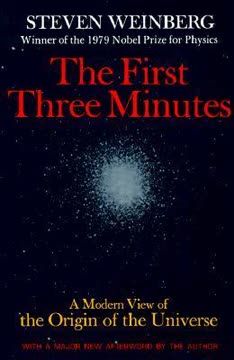
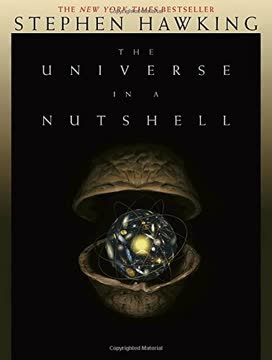
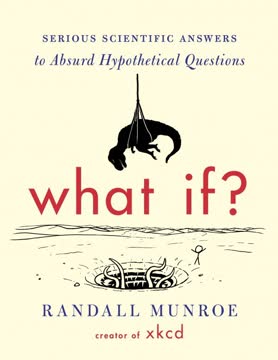
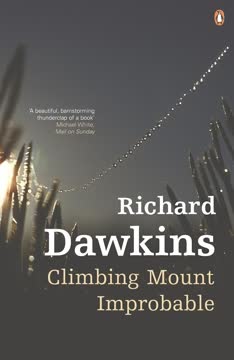

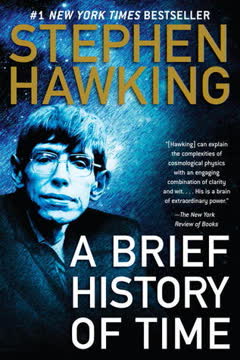
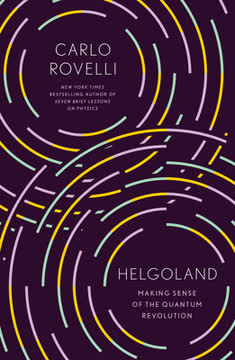
Download PDF
Download EPUB
.epub digital book format is ideal for reading ebooks on phones, tablets, and e-readers.
